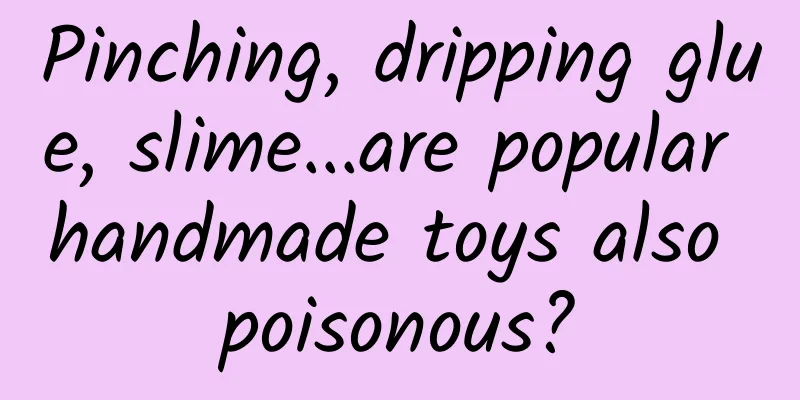What is the "foam" in the broth? If there is foam when washing beans, can I eat it?

|
There are many cases of food foaming in daily life. When making soy milk and soaking soybeans, you will find a lot of foam. When washing or boiling red dates, oats or boiling oats, some foam will float on the water. Some people worry about how there can be so many foams in plant ingredients. When cooking bone soup at home, there will also be white foam in the soup. Some people say that it is dirty stuff. What are these foams? Can food with foam be eaten? How are bubbles produced? Those who played with bubbles when they were young remember that they just needed to get some soapy water, shake it evenly, and dip a plastic ring in it to blow bubbles. So when it comes to things that can produce bubbles, our first impression is soapy water. Now, we are in an era of high tension over food safety incidents. Unfamiliar food phenomena are often associated with the illegal behavior of unscrupulous merchants. The appearance of bubbles of unknown origin in food has become a very nervous thing. Stable foam requires surfactants In fact, the so-called "bubbles" are a dispersed system in which gas is separated by liquid. Foam itself is a thermodynamically unstable system. Usually, pure liquid will not produce foam, but if the liquid contains one or more surfactants with foaming and stabilizing effects, it can produce foam that lasts for tens of minutes or even hours. Surfactant refers to a class of compounds that can reduce the surface tension of a liquid. When there is a mechanical action such as stirring, air enters the liquid and is embedded in it to form foam. Surfactant is an "amphiphilic" molecule that can be intimate with both water molecules and oil molecules. Stearate in soap is a typical surfactant, so soapy water can be used to blow bubbles. Why do foods produce foam? Many biological macromolecules in food have this "amphiphilic" characteristic, the most important of which is protein. For example, oats are rich in high-quality protein - oat protein, which accounts for up to 20% of oats. These proteins have good foaming properties. For example, the white foam produced by cooking oats is mainly protein. Oats are a grain crop, and when cooking oats, bubbles will form under the rolling of boiling water. The white foam in bone soup is mainly because some soluble proteins in the meat bones dissolve into the soup during cooking, and the protein produces a foaming effect. In addition to protein, there are other high-molecular substances in food that have surface activity and can produce foam, the most common of which is saponin. Saponin, also known as saponin or saponin, is a relatively complex compound composed of sapogenin and sugar, uronic acid or other organic matter. Because the molecule contains lipophilic ligands and hydrophilic sugar groups, saponin is also a good surfactant. Its aqueous solution can produce a large amount of long-lasting honeycomb foam when boiling and oscillating, so it is called saponin. The foam when washing soybeans is mainly due to the saponin in soybeans, and the foam when boiling red dates is also due to the saponin in red dates. Saponins are widely found in the plant kingdom and some marine organisms, and are mainly distributed in plants such as the Araliaceae (common ones include ginseng, Panax notoginseng, and American ginseng), the Leguminosae (common ones include foods with the word "bean" in their names and peanuts, but not potatoes), the Campanulaceae (common ones include Codonopsis pilosula, Platycodon grandiflorum, and Adenophora adenophora), and the Polygalaceae. In addition to foaming, saponins are also a class of bioactive substances that have certain health benefits. Many studies have found that saponins have the effects of lowering blood lipids and cholesterol, antibacterial, antiviral, antioxidant, anti-free radical, inhibiting tumor cell growth, and immune regulation. However, saponins are also hemolytic agents and are irritating to the gastrointestinal mucosa. They only account for a small proportion of the total food, so there is no risk in consuming them. However, purified saponins need to be used with caution. Amazing foam food Have you heard of foam food? Think back to the time when the foam of beer was refreshing and the foam of cappuccino coffee was memorable. In fact, foam food has long existed in our daily life. Foam is the most attractive food in food science and the most advanced cooking technology in the cooking world. Foam is one of the most attractive foods in the food industry, and foaming is widely used in food processing. There are many delicacies made by foaming, such as cream, cakes, meringues, bread, soufflés, ice cream, etc. These crispy or smooth delicacies are all because the foaming effect wraps air into the ingredients to have such a taste. In food production, there is a type of food additive used to enhance food foam, namely emulsifiers. Food contains a multiphase system of water, protein, fat, sugar and other components, many of which are insoluble in each other. Emulsifiers can make the components blend with each other to form a stable and uniform form, which is convenient for food processing. In the food industry, emulsifiers are often used to achieve the purpose of emulsification, shortening, foaming, etc. It can also improve the flavor of food and extend the shelf life. Common emulsifiers include glycerol fatty acid esters, lecithin, soy protein extract, etc. Foam is also the most advanced cooking technique in the cooking world. Foam cooking, known as one of the techniques of "molecular gastronomy", is a very interesting cooking technique. It is to make foam out of food through cooking, giving people a brand new experience. Conclusion The appearance of foam in food is actually a very normal phenomenon. Many macromolecules in food, such as proteins and saponins, can promote the production of bubbles, and these foams are harmless to the human body. In life, many "foam foods" are still very unique delicacies. The foam on the surface of the meat soup is mainly some soluble protein dissolved in the meat. The foam is formed due to the boiling water, and some fat is also wrapped in it. This foam is actually edible, but it is likely to be unpalatable. Author: Ruan Guangfeng |
>>: Use vitamin C effervescent tablets with caution, as overdose may cause gout!
Recommend
3 steps to event planning and promotion!
The author summarizes the "three-part theory...
How to make the sound better in Fat Snowman's "Sound Magic Class"
Do you envy others’ good voices? Want to open you...
Popular Science | What did ancient women wear when traveling?
Summer vacation is coming soon, and many parents ...
VisionMobile: 2015 Mobile Developer Trends Report
The 2015 Mobile Developer Report surveyed more th...
How did a 100-meter tower crane grow taller?
In our daily life, we often see tower cranes bein...
A sober reflection on the "ecological" effect behind the crazy "LeTV 919"
In addition to "Double Eleven" and &quo...
User operation: the core operation methodology that you must know!
For a long time, people have had many opinions an...
my country's first independently designed nuclear power plant has been generating electricity safely for 30 years
"Independent innovation is the soul of the d...
Can controlling your diet cure gout? 6 common rumors, all explained
Recently, the news that "a man with gout bli...
Why does the spring breeze not reach Yumen Pass? Look at the map and you will see the answer.
"The Yellow River flows far away among the w...
It turns out that the Double Eleven copywriting can be written like this
In addition to promotions, how else can you write...
Analysis of iQIYI App User Operation System
This article will take Bilibili as an example to ...
A single advertisement was exposed over 150,000 times, and the promotion was explosively promoted in the circle of friends of overseas study agencies!
Invisible poor parents, tutoring phobia, cram sch...
Mobile email APP Mail Master plays the warmth card to create a warm winter version for users
As Christmas approaches, the mobile email app Mai...
HarmonySpace Hongmeng cockpit large-scale OTA upgrade brings users a smarter interactive experience
Since October, the Hongmeng cockpit based on Harm...









